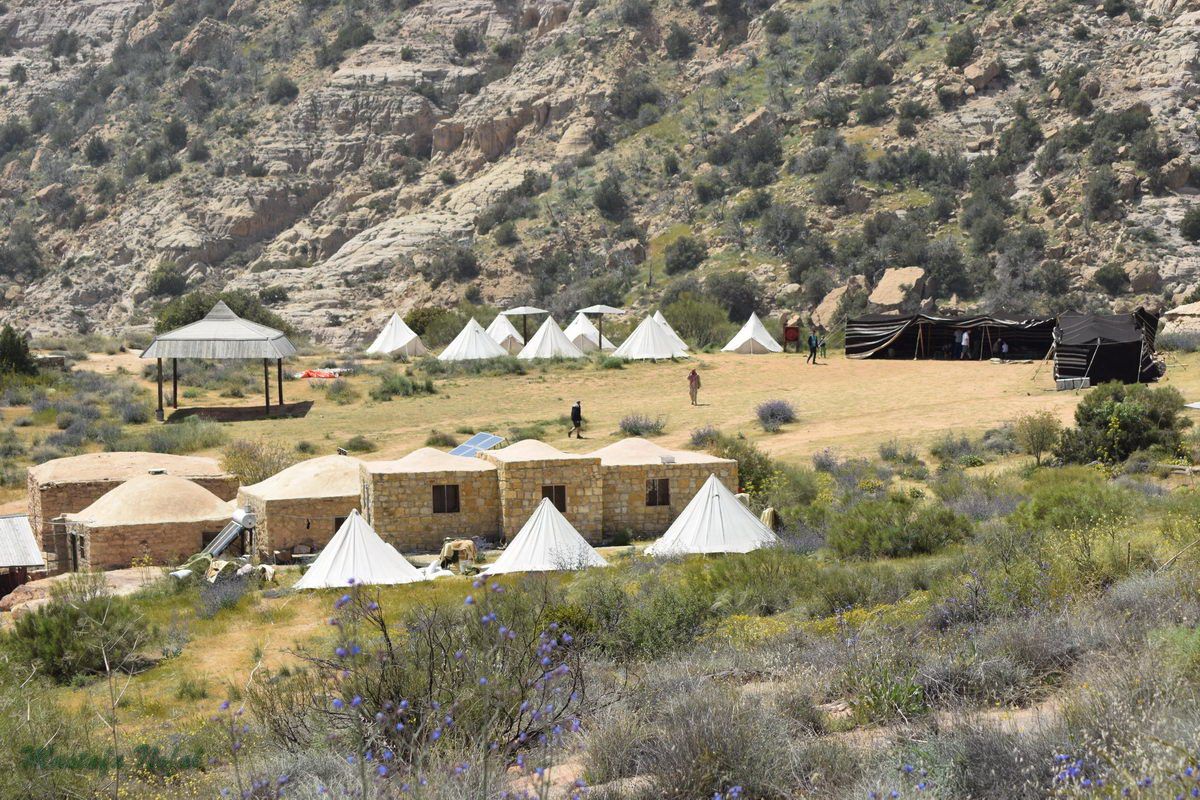Jordan is blessed with an incredible natural diversity. Nowhere is this more visible than in the seven nature reserves of The Royal Society for the Conservation of Nature (RSCN).
From the desert oasis of the Azraq Wetland Reserve to the dramatic gorges and rivers of the Wadi Mujib Reserve, this system of reserves protects much of Jordan s most dramatic topography,in addition to the Kingdom s flora and fauna. In addition, the RSCN protects the peoples of the reserve areas by creating sustainable economic options for them, either in the reserves or through its tourism arm, Wild Jordan, which allows them to continue their unique lifestyles and not migrate to the cities. This emphasis on total conservation is what sets RSCN and Wild Jordan apart.
List of all reserves in Jordan : Dana Natural Reserve, Al Mujib Reserve, Wadi Feynan Reserve, Ajloun Forest Reserve, Debbeen Reserve, Shaumari Reserve, Azraq Oasis Reserve
Dana Natural Reserve
The Dana Reserve is possibly the best known of Jordan s nature reserves. This showplace, set up in 1993, has become an exemplar of how to set up a sustainable, ecofriendly reserve. With its network of guided and unguided hiking trails, its campground, guesthouse and eco-Iodge with their staffs of residents, its dramatic wadis and mountains dropping about 1600 meters from the highest point, there are 320 square kilometers full of things to do and marvel at. Most surprising is not the Nabatean tomb, but the sea urchin fossils, now so far from the sea! Dana s unusual mushroom-shaped rock formations captivate the eye. Visitors will leave the reserve with an appreciation of the techtonic forces that shaped this region.
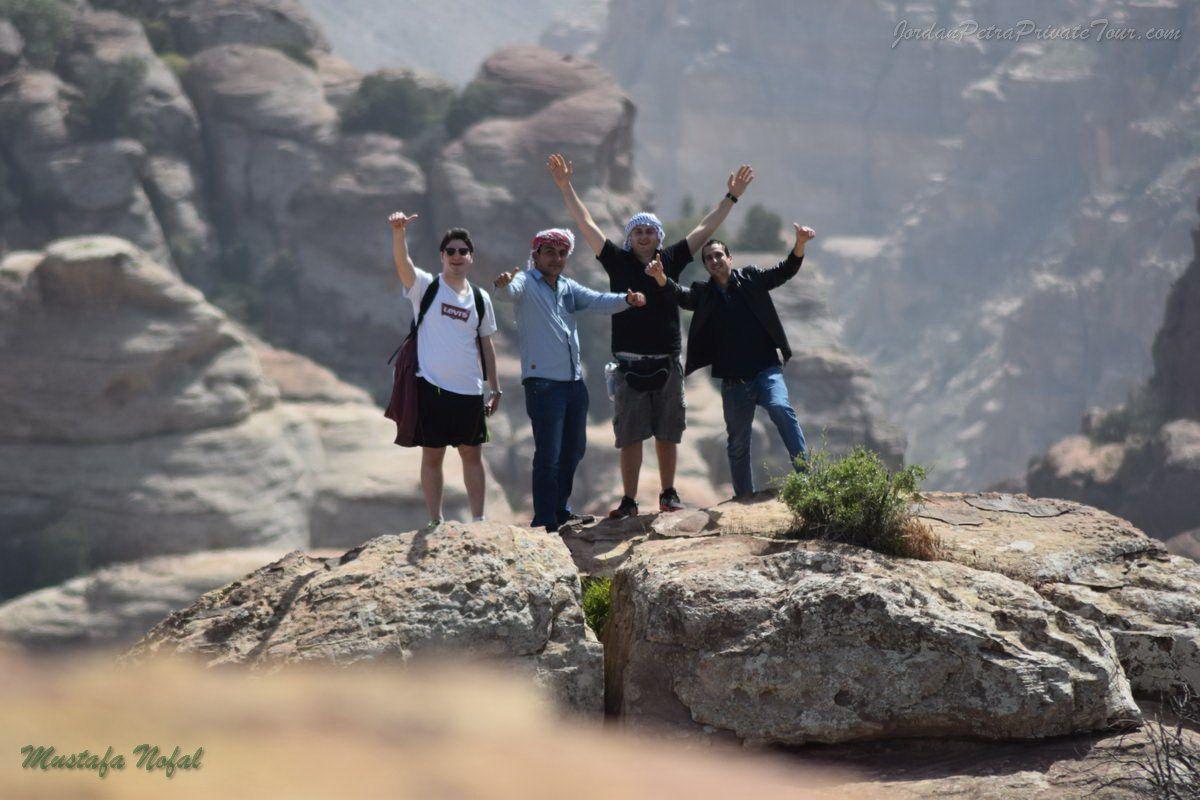
Dana has been inhabited since approximately 4000 BC There is evidence to suggest that Paleolithic peoples, Egyptians, Nabateans and Romans lived here, lured by its strategic location and reliable fresh water sources. Dana Village is now experiencing something of a rebirth, as the economic opportunities offered by RSCN and the "Friends of Dana" group allow the residents to rebuild their stone houses and remain here, rather than moving away from their families to find work. A unique opportunity arose recently when an Italian filmmaker chose Dana Village as the site for his movie. The village was first built about 400 years ago by members of the AI-Ata ata tribe.
Within the reserve, there are restricted areas where Bedouin families from the Azazmeh, Amareen and Sa idyeen tribal groups graze their livestock. Bedouin graves were often made with local juniper wood, as its distinctive scent kept away the hyenas, the largest predator in the reserve. Juniper wood was also used for tent poles, and the berries for tea. Some of the animals in Dana are truly unique. The Caracal cat is such a great jumper that it can catch birds in midair. 80% of the world s population of Tristan s Serin, a small finch found only in the Middle East, lives in Dana. It is not uncommon for visitors to be serenaded at night by grey wolves, as at least three packs live within Dana.
Wadi Feynan Reserve
Wadi Feynan is at the western edge of the Dana Reserve area. The primary destination here is the Feynan Eco-Iodge, an adobe guesthouse powered entirely by solar energy and lit at night primarily by candles. It is located close to the ruins of Khirbet Feynan, the ruins of a community centered around a copper mine. There is evidence of inhabitants in this area during the Neolithic, Iron Age, Roman, Byzantine, and Early Islamic times. The austere but beautiful surroundings, and its emphasis on interaction rather than electronic entertainment, make the eco-Iodge a romantic destination away from the stresses of modern life.
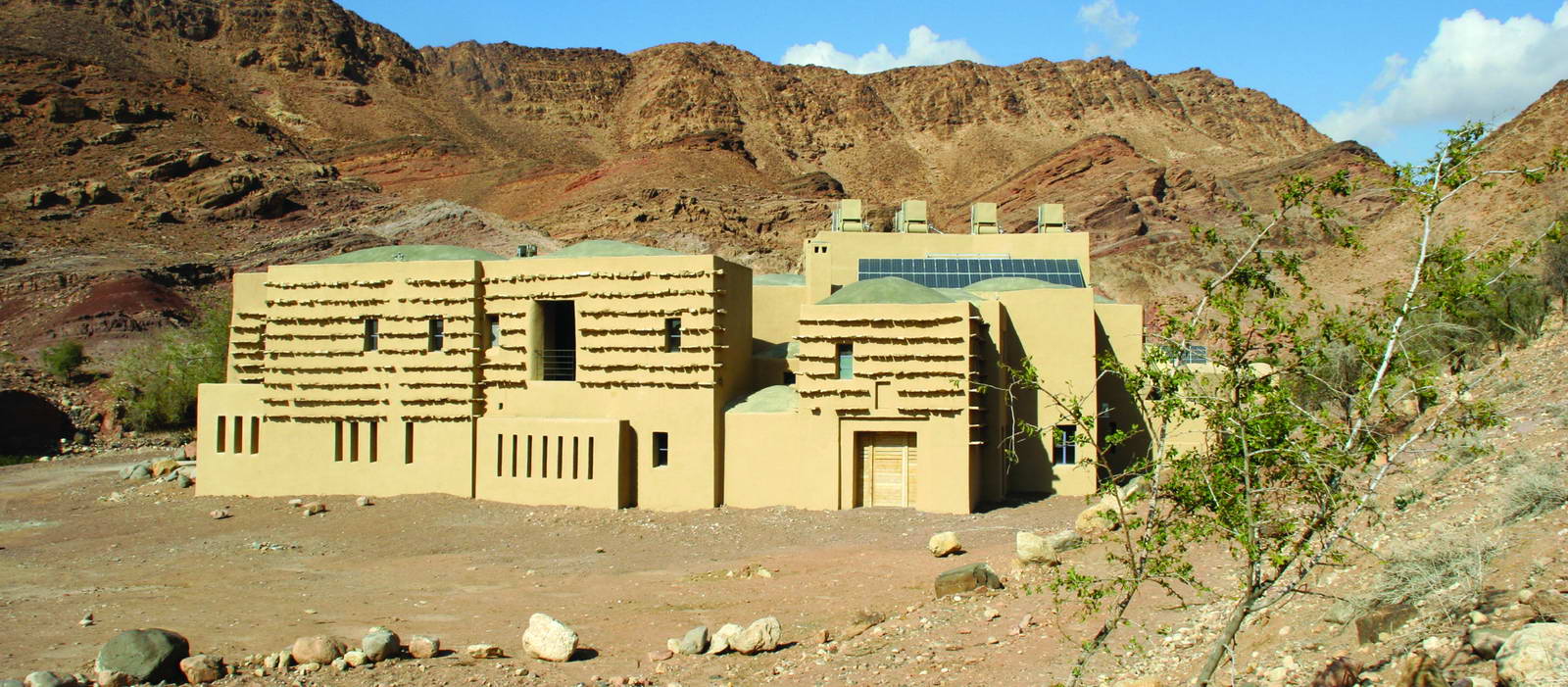
Ajloun Forest Reserve
The Ajloun Forest Reserve is 13 square kilometers covered in wild pistachio, carob and oriental strawberry trees. It is a green gem, surrounded by lush orchards of olive, pomegranate and fig trees. It was originally set up in 1988 as a breeding program for indigenous Roe Deer. The reserve and the area surrounding it are dotted with ruins. The most famous is Salahidin s Ajloun Castle, but perhaps the most intriguing is Mar Ilyas, the ruins of one of the oldest churches found in Jordan, and sacred to lIyas, who is known in the Bible as Elijah. There is an enjoyable, guided hike from the reserve to Mar lIyas, and onto the castle. Ajloun is a wonderful place to hike, watch wildlife and camp
Ajloun Reserve is surrounded by more than ten villages, and most of the young people here work for the army or as farmers. Produce from the region, especially olives, is renowned for its quality! Taking advantage of this, RSCN has recently set up a factory, where women from the surrounding villages will manufacture olive oil soaps, juices and dried fruit from locally sourced produce. A newly inaugurated guided hike starts from the reserve, wanders up to the eagle territory to enjoy the sight of these majestic birds soaring in the air, and then winds down to the factory and the orchards which supply it. A highlight is a meal in one of the family-owned farms.
Desertification and deforestation almost wiped out the Roe Deer. The breeding program began with three animals from Turkey and in the year 2000 there were over 20 animals. Other animals who roam freely through the dense vegetation of the reserve include the Wild Boar, the Hyena, and Hermann s Tortoise. Greenfinches, jays and doves can be spotted in the sky.
Dibbeen Reserve
Dibbeen Reserve, located near the Ajloun Reserve, is 8 square meters of cool forest, featuring oak and Aleppo pines in the lower areas. This is the driest area in the world where Aleppo pines are known to grow naturally, and the pines here are some of the oldest and largest in the kingdom. It s a lovely area, with a wide variety of plants, including several species of orchids. It protects at least 17 globally endangered species, including reptiles, plants and birds. It also hosts a number of Persian squirrels, the only variety of squirrel found in the Middle East, as well as grey wolves and striped hyenas. This reserve is known as one of the coolest places in Jordan during the summer.
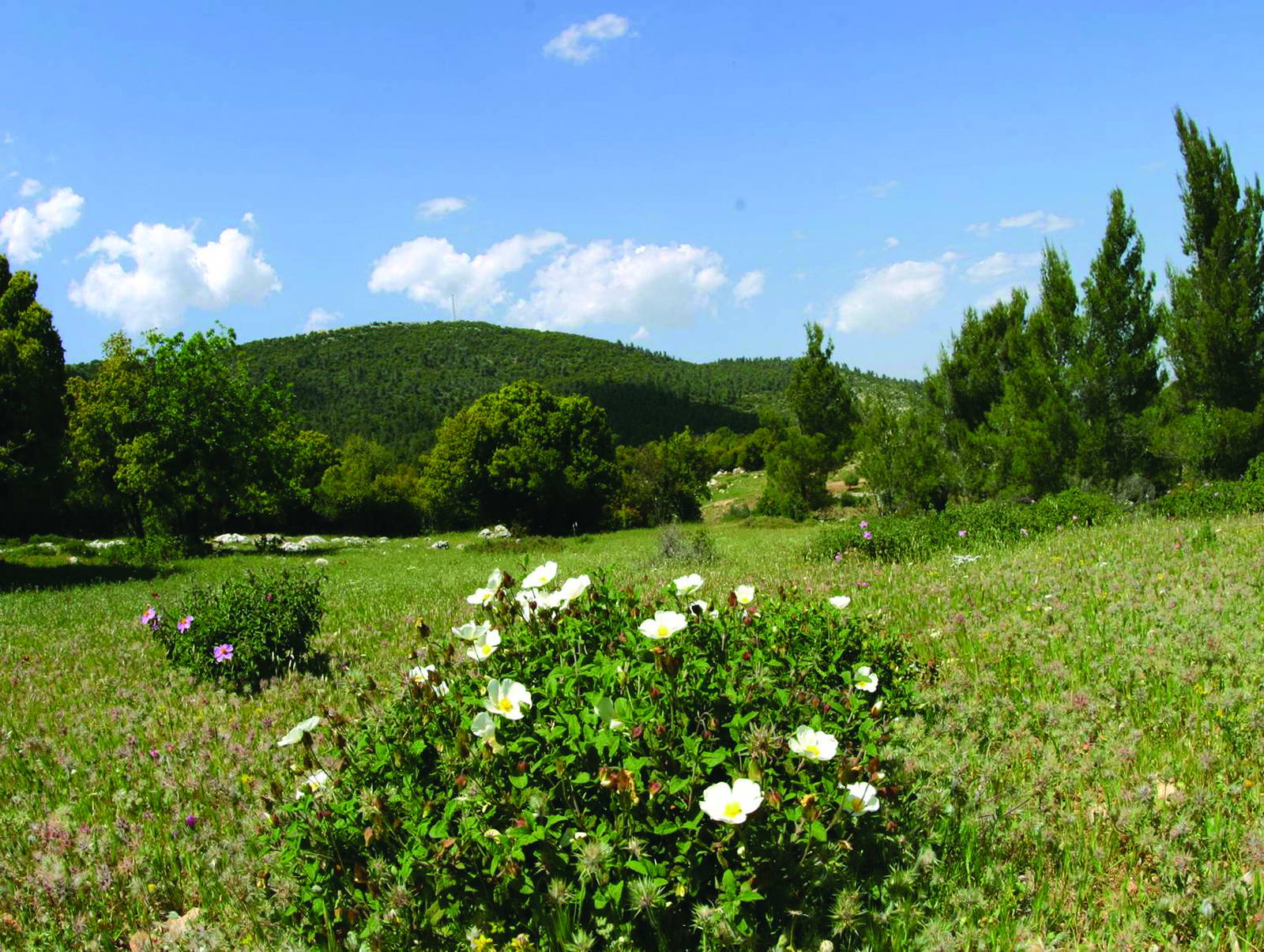
Wadi Mujib Reserve
Wadi Mujib, located on the eastern edge of the Dead Sea, is adventure travel at its best! Its 212 square kilometers of mountains and rivers are tough and fast-running, even in summer. This is the wildest, least accessible reserve in the RSCN system, and the second largest. Most of the trails involve swimming for long periods and there is a twentymeter waterfall to traverse! But the flora and fauna of the area, including the Nubian ibex and the tufted-ear Caracal, are worth the effort of the climb, as is the dramatic leap in elevation from 900 meters above sea level to 400 meters below.
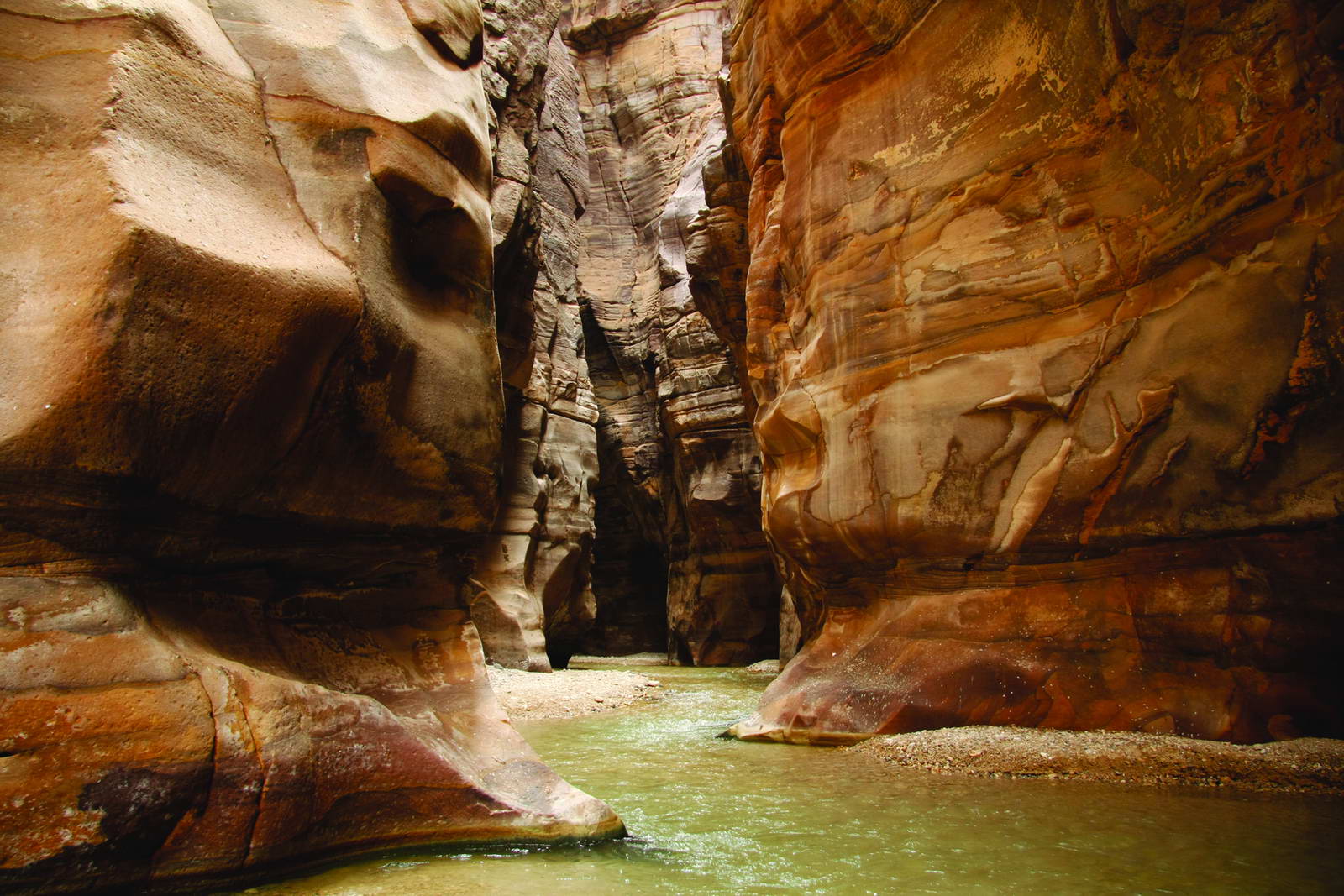
Ironically, a little bit of Mujib s culture can be found in the Louvre Museum in Paris. A French traveler named Ferdinand de Solei visited the area and found a black basalt statue representing a Moabite leader known as Faqu. Within the reserve are two villages, one of which, Faqua, takes its name from the statue. The history of the villages goes back over 3000 years, through Assyrian, Greek, Roman, Nabatean and early Islamic civilizations, as the areas were busy trading centers.
The flora and fauna of the reserve also provide some surprises. The delicate yellow Wild Orchid provides an exotic counterpoint to the rugged terrain, as does the purple and white crocus, which grows amongst the stones during the winter. The hyrax, a small, tailless mammal, is related to the elephant. They have evolved a piercing cry to warn other members of their colony when danger threatens. The White Stork is famous in the Middle East because it frequently nests on mosques. The Nubian Ibex, portrayed in early rock art, is thought to have been a symbol of the moon god in the time of the Queen of Sheba. The original 18 ibex of the breeding program were donated by the San Diego Wild Animal Park in the United States, and a number have been since been released into the reserve.
Shaumari Reserve
As opposed to Wadi Mujib, the Shaumari Reserve is perhaps the most accessible in the system, organized in 1975 to house the captive oryx breeding program. Today, the oldest reserve hosts not just oryx but also the onager or wild ass, blue- and red-necked ostriches, gazelles and ibex. Set up as a wildlife park, the free-ranging herds of some of the rarest animals in the Middle East can be observed from blinds set up around the park and from shuttles.
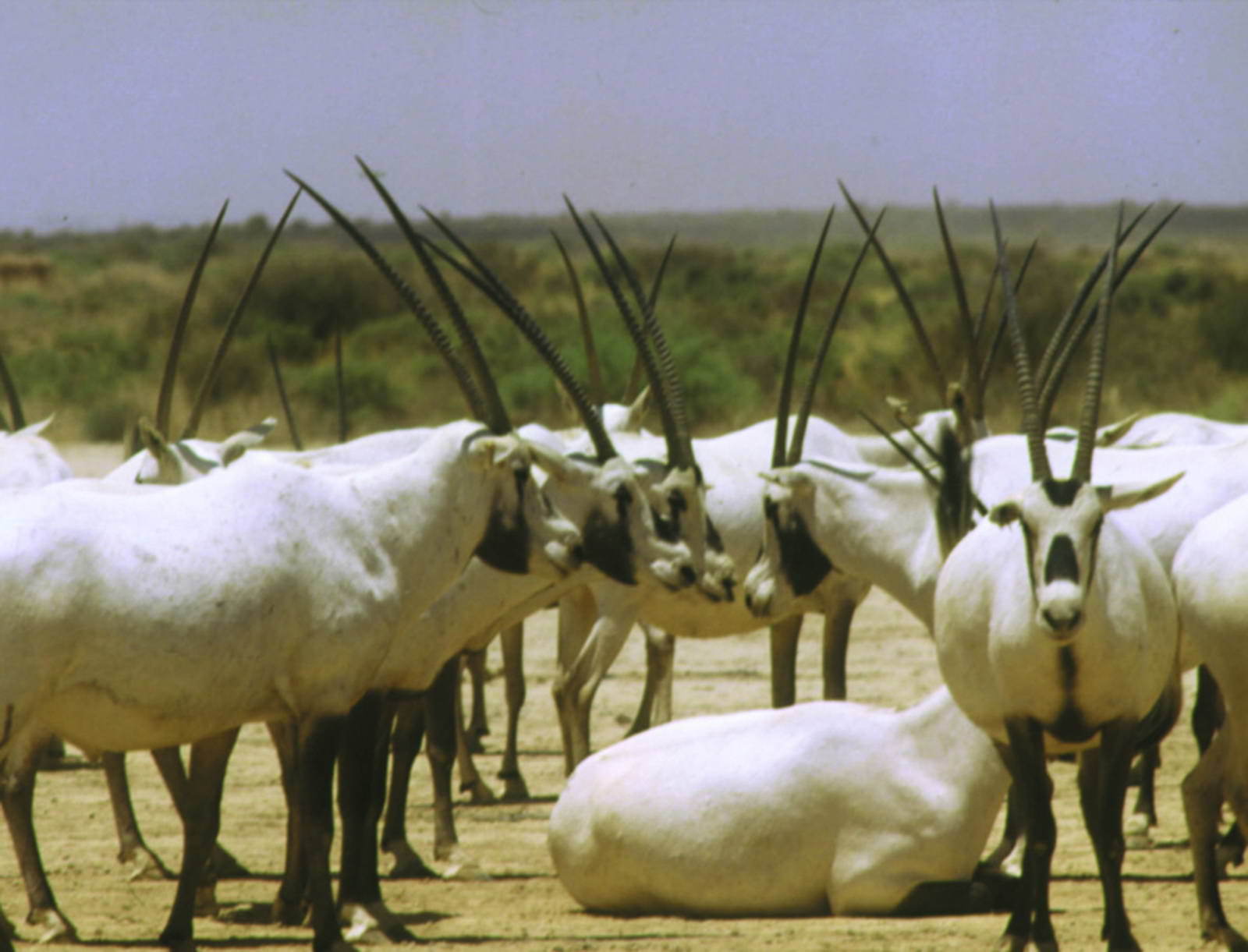
Shaumari is also an example of international cooperation, as countries from all over the world have contributed to this breeding center. In 1962, Operation Oryx set up a World Survival Herd in the USA, using animals from Oman, London, Kuwait and Saudi Arabia to guarantee genetic diversity. From the original 11 oryx brought to Shaumari in 1978, the herd has increased to over 200, and Jordan is now at the forefront of supplying oryx to other countries working to re-introduce the oryx successfully back into their indigenous environments. The name "Oryx" is derived from the Greek word meaning "pickaxe", referring to its horns. They are so long and straight that some experts believe the legend of the unicorn originated with travelers who saw the oryx from the side. The Blue-Necked Ostrich breeding program began with 3 animals sent from the Oklahoma City Zoo. Now there are over 30 birds in the herd. The ostrich is the fastest creature on two legs, capable of going from 0-60 kilometers in 2 seconds. Other breeding programs include the Gazelle and Onager programs.
Shaumari s role as a breeding center, its network of shuttles and blinds, and its educational center make it a particularly good choice for school visits and wildlife sightings. Other animals who live in the reserve include the Red Fox, Cape Hare and Jackal.
Azraq Oais Reserve
Azraq Reserve, with its new eco-Iodge, is located between the two villages of Azraq and Azraq at-Jan ubi. This area was an important trading area due to its fertile oasis, which were the biggest east of the Jordan River valley. It was also a stop for pilgrims on their way to the Haj in Saudi Arabia. Residents of the northern town are primarily Druze, descendents of Syrian Druze who fled here during the uprisings in the 1920s. Little is known about the Druze religion, but it was spread in the 11th century by followers of the Fatimid caliph, AI-Hakim. The southern town is populated primarily by Circassians, Muslims from the Caucus mountain region who were relocated to Jordan by the Ottomans during the 19th century. Originally farmers, the villagers now work primarily in the service industry and in salt extraction. Azraq Reserve strives not only to restore the wetlands, its flora and fauna, but also to enable these two distinctive cultures to flourish and maintain their unique characteristics.
The Azraq area was once a haven for wildlife, as evidenced by the nearby Desert Castles, some of which were used as hunting lodges. The wetlands of the Azraq oasis gained their name, which means "blue" in Arabic, from the color of the pools and marshland. The skies were often obscured by the enormous numbers of birds who took advantage of the welcome break in the desert on their migration paths. However, by 1993, the pressure on the area by the water needs of the towns of Zarqa and Azraq, coupled with overgrazing and fire damage had destroyed the oasis.
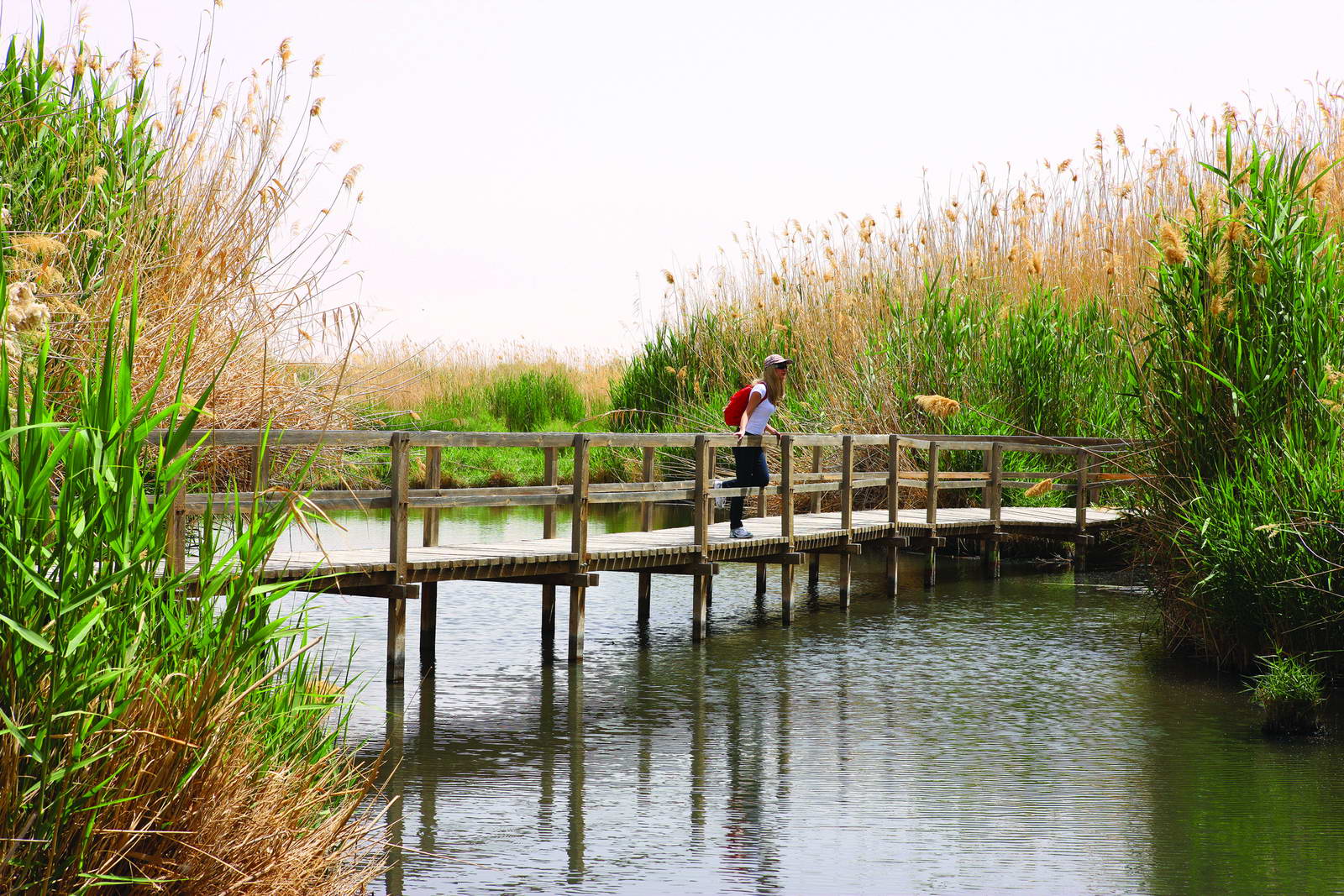
In 1994, RSCN, with funding from the Global Environment Facility, began slowly restoring 10% of the original wetlands. By using natural systems to maintain the oasis, like reintroducing water buffalo to control the reeds, the wetlands have been able to attract most of the avian visitors that once were taken for granted, although not in the same numbers. The Honey Buzzard, the Avocet, and the Kentish Plover all stop now at Azraq during their migrations, and birds like the Crane, Teal and Mallard now spend the winter. RSCN is also working to save the indigenous killifish. With luck, future generations of Jordanians and visitors will be able to appreciate the value of this blue jewel of the desert. The Azraq basin changes from black basalt in the north to white limestone further south. The basalt comes from lava that forced its way through existing rock faults, rather than from a volcanic eruption. This black stone was used for building in Umm AI-Jimal, Azraq Castle, and can be seen in many houses in North Azraq village.
RSCN s system of nature reserves, spanning about 1 % of Jordan s total land area, encompasses some of the most amazing wild areas in the Kingdom. The environmental successes of RSCN, some of which have come about in a short time, are globally recognized. By working with the locals of the reserve areas to create sustainable economic options that support the environmental restrictions of the reserve, RSCN is working to stop migration to cities and to make unique travel opportunities available for both Jordanians and visitors. The ecological work of the society, protecting the land, water, flora, fauna, and people of these regions, is something to be proud of and supported, as they preserve these cultural jewels for the next generation.
References:

